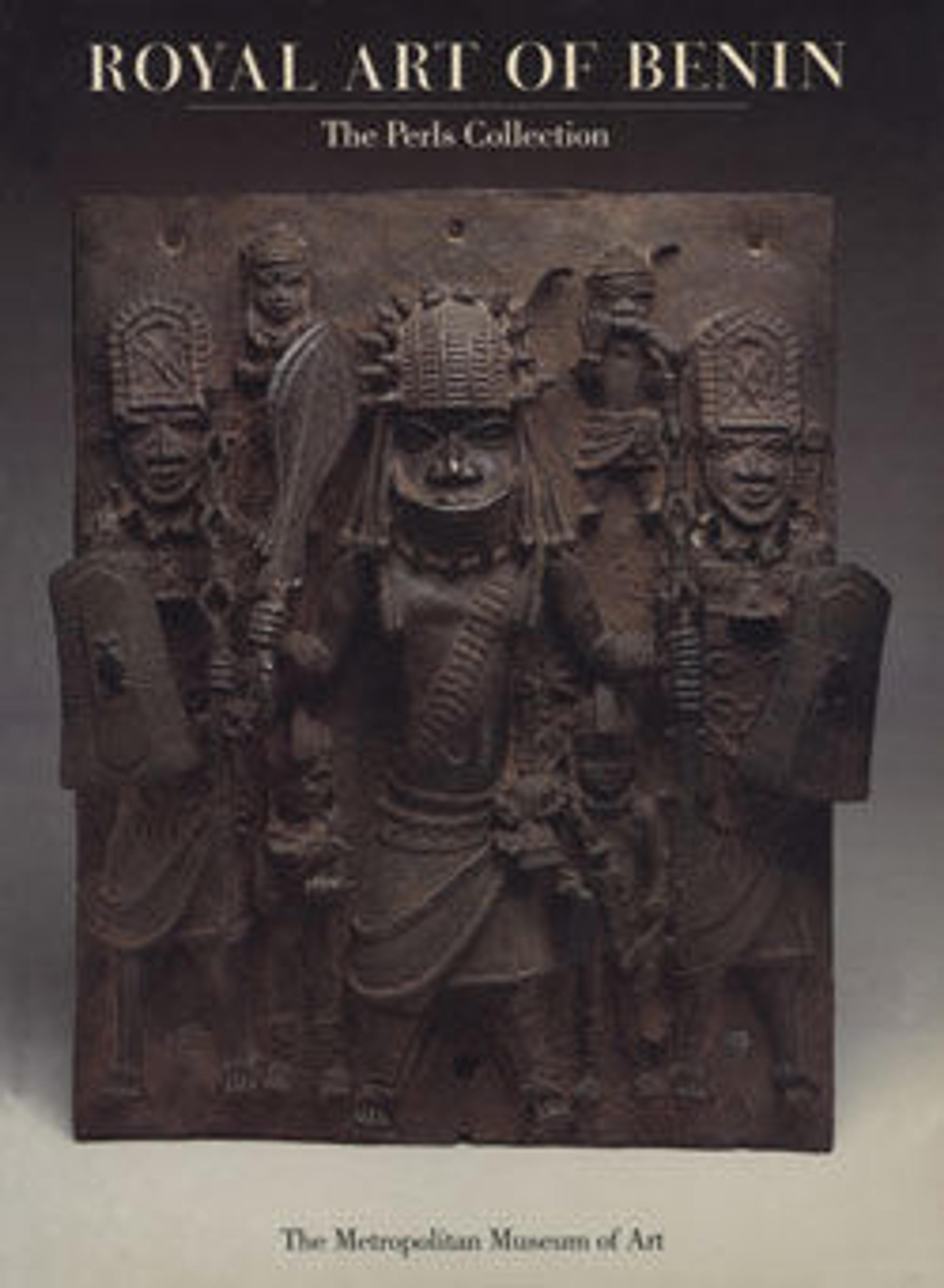Idiophone: Bird of Prophecy (ahianmwen-oro)
Hand-held clappers are among a vast and varied category of 'self-sounding' musical instruments, known collectively as idiophones, that produce sound without the addition of a stretched membrane or a vibrating string or reed. The most common form of clapper in the Benin corpus consists of a cylindrical shaft surmounted by the figure of a long-beaked bird with outstretched wings, such as this example. They are played by striking the bird figure on its beak with a metal rod.
The bird perched with outstretched wings on the finials of this idiophone sounded on the occasions of Ugie Oro court festivals is usually called the "bird of prophecy" (ahianmwen-oro) and sometimes the "messenger of god" (odibosa). Beginning with the reign of King Esigie in the sixteenth century, the sounding of clappers depicting the bird of prophecy at Ugie Oro court ceremonies was regarded as a sign that the kings of Benin were endowed with the power to alter history.
The bird perched with outstretched wings on the finials of this idiophone sounded on the occasions of Ugie Oro court festivals is usually called the "bird of prophecy" (ahianmwen-oro) and sometimes the "messenger of god" (odibosa). Beginning with the reign of King Esigie in the sixteenth century, the sounding of clappers depicting the bird of prophecy at Ugie Oro court ceremonies was regarded as a sign that the kings of Benin were endowed with the power to alter history.
Artwork Details
- Title:Idiophone: Bird of Prophecy (ahianmwen-oro)
- Date:16th–19th century
- Geography:Nigeria, Court of Benin
- Culture:Edo peoples
- Medium:Brass, iron
- Dimensions:H. 13 in. × W. 3 3/4 in. × D. 3 3/4 in. (33 × 9.5 × 9.5 cm)
- Classification:Metal-Musical Instruments
- Credit Line:Gift of Mr. and Mrs. Klaus G. Perls, 1991
- Object Number:1991.17.89
- Curatorial Department: The Michael C. Rockefeller Wing
More Artwork
Research Resources
The Met provides unparalleled resources for research and welcomes an international community of students and scholars. The Met's Open Access API is where creators and researchers can connect to the The Met collection. Open Access data and public domain images are available for unrestricted commercial and noncommercial use without permission or fee.
To request images under copyright and other restrictions, please use this Image Request form.
Feedback
We continue to research and examine historical and cultural context for objects in The Met collection. If you have comments or questions about this object record, please contact us using the form below. The Museum looks forward to receiving your comments.
